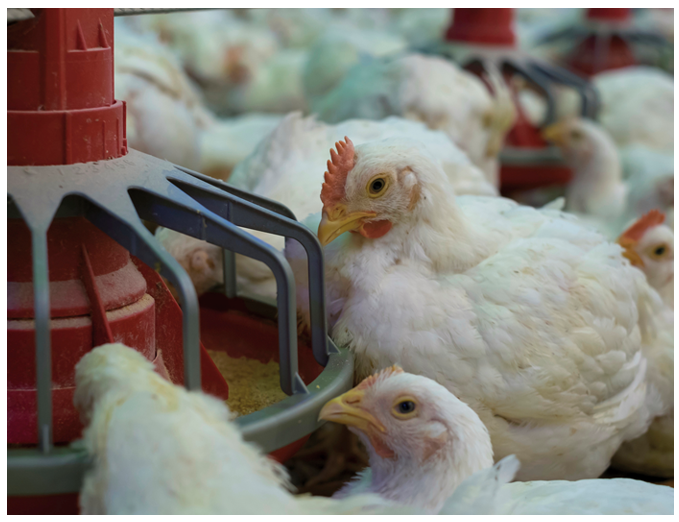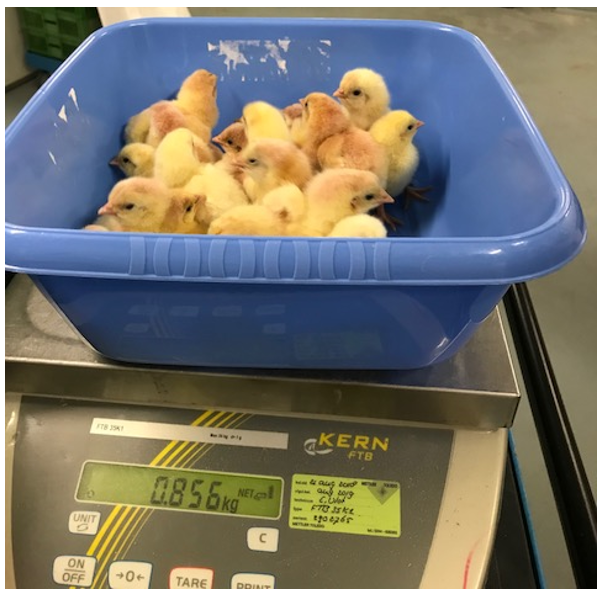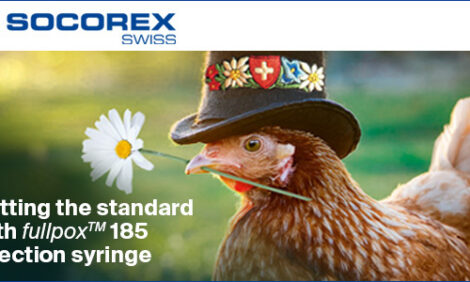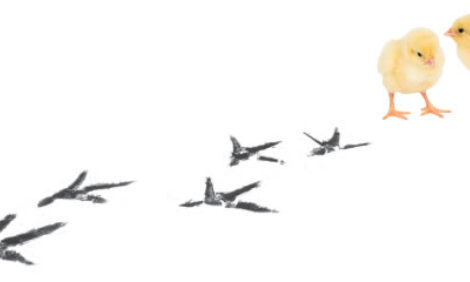



Gut health: coccidiosis, enteritis and nutritional management
The constant process of evolution in the poultry industry has resulted in levels of production that were inconceivable a few years ago.These achievements, which are linked to ever greater efficiency in feed utilisation, would not be possible without the proper functioning of the digestive system.
It is therefore essential to achieve optimum gut health in order to harness the full productive potential brought about by genetic and technological improvements. But what do we mean when we talk about gut health? Basically, we can say that it consists of the interaction of the following factors: the diet consumed, the mucosa and the commensal microbiota present in the gastrointestinal tract. Thus, gut health is based on a symbiotic equilibrium between the microbiota and the mucosa, where the welfare and performance of the bird is not constrained by intestinal dysfunction (Celi et al., 2017).
Under current conditions of production, the birds’ gut is subject to a high level of pressure and of demands. The risk of succumbing to this pressure and suffering imbalances is very high. This destabilisation in the intestinal environment is reflected in changes in the composition of the microbiota, damage to the mucosa and loss of integrity, and consequent impairment of absorption of nutrients and of productive results.

It is therefore necessary to create a healthy intestinal environment, and to take measures to prevent enteric disorders that can contribute to these imbalances.
Coccidiosis as a predisposing factor for bacterial enteritis
Coccidiosis appears to be one of the principal destabilising agents, causing the destruction of enterocytes and affecting the integrity of the intestinal mucosa and wall. The lesions that it causes, the inflammatory process, the reduced absorption and consequent excess of nutrients in the lumen, all contribute to the proliferation of certain groups of bacteria, in particular colonisation by Salmonella spp. (Takimoto et al., 1984), Escherichia coli (Nakamura et al., 1990) and, above all, Clostridium perfringens (Porter et al., 1998).
This situation clearly predisposes birds to intestinal dysbiosis and/or bacterial enteritis and in particular a process of necrotic enteritis. When the overgrowth of C. perfringens causes necrotic enteritis, this further aggravates the damage to the mucosa and intestinal functioning, resulting in worse feed conversion rates and performance, and can cause high mortality rates.
Prevention of coccidiosis is therefore essential for optimal intestinal health. Any method of disease control must always be accompanied by the most appropriate hygiene and management conditions. Of the range of strategies used to control the disease (Peek & Landman, 2011; Tarek et al., 2016), the most widespread is, without a doubt, the use of anticoccidials (Johnson & Reid, 1970, Vinay et al., 2013). The use of vaccines has also been shown to be highly effective for the development of immunity to the parasite (Shirley et al., 2007; Alameda et al., 2015). Another alternative is the addition, to the feed or the drinking water, of products which have a direct or indirect action on the replication of the parasite, or on its intestinal adverse effects, for example phytogenics, probiotics, prebiotics, enzymes, etc. (Allen et al., 1998).
Prevention of coccidiosis with the use of vaccines
Prophylaxis with live vaccines has seen continuous growth as a method of prevention against coccidiosis.
The progressive development of resistance to the effect of coccidiostats by different species of Eimeria has meant that, although anticoccidials are still the preferred method for control of the disease, prevention by means of vaccination has been on the increase. Vaccination can be part of a strategy of rotation of several cycles alternating with coccidiostats, so that, in addition to the development of immunity in the vaccinated cycles, it contributes to the recovery of the susceptibility of the Eimeria strains to the coccidiostats during the cycles in which they are used (Chapman & Jeffers, 2014; Dardi et al., 2015).
On the other hand, ever more producers are using vaccines as the main method of control of coccidiosis, reducing (Ronsmans et al., 2015) or completely giving up the use of coccidiostats (new production trends: processes of demedicalisation, with reduction of antibiotic use or completely antibiotic-free production; organic or eco products; certified birds or slow-growing birds …).
Live attenuated vaccines (e.g. HIPRA’s Hipracox® and EVALON® vaccines, or its most recent one, EVANT®) are the only ones authorised in Europe, in contrast to those based on the inclusion of wild strains, and have been shown to be highly effective in preventing the disease. In addition, owing to the process of attenuation, they are also very safe vaccines, having a very modest intestinal impact during replication (Dardi et al., 2017).
Intestinal health in a coccidiostat-free environment: prevention of necrotic enteritis
Since the use of antibiotic growth promoters was banned in Europe in 2006, an increase has been seen in the incidence of dysbacteriosis and, in particular, necrotic enteritis.
In this context, ionophore coccidiostats which, in addition to their anticoccidial action, have a certain antibiotic effect in the intestine, can be of help in the control of bacterial enteritis. Because of this, in a production where ionophore coccidiostats are not used, it is important to work to develop other different methods of control.
As mentioned before, the prevention of coccidiosis by vaccination is one of the main alternatives. Thus, avoidance of the lesions produced by E. maxima is established as the principal measure for the reduction of necrotic enteritis (Williams, 2005).
But there are other, nutritional, factors which, when well-managed, and in combination with vaccination against coccidiosis, can help to control the risk of proliferation of C. perfringens.
We are referring, inter alia, to the composition of the feed given to the birds. For example, a high percentage of total protein in the feed formula, without the use of appropriate protease enzymes to increase digestion and absorption, will provide a very valuable substrate for bacterial growth. A similar case arises with the inclusion of excessive amounts of white or viscous cereals (wheat, barley, rye, oats), which are rich in non-starch polysaccharides (NSP) and increase viscosity in the intestine, reduce transit and foster the proliferation of Clostridium (Branton et al., 1987; Annett et al., 2002).
On the other hand, all too often, control of the level of mycotoxins in the poultry feed is not given the importance it deserves as a predisposing factor for disease, and in the case in point, as a precursor to a problem of coccidiosis and/or necrotic enteritis. Indeed, large quantities of mycotoxins such as aflatoxins, deoxynivalenol or T-2/HT-2, produce immunosuppression and/or gastrointestinal changes that can facilitate the development of the disease.
Combination of coccidiosis vaccines and nutritional additives in the prevention of necrotic enteritis
As part of this nutritional focus, we need to highlight the growing interest in the use of nutritional additives for the control of bacterial enteritis.
The large group of compounds used as additives includes probiotics and prebiotics. In addition to the other benefits that they provide (for example as immunostimulants), their main function is as regulators of the intestinal microbiota, promoting the proliferation of bacteria regarded as saprophytes, which will compete with others that may be pathogenic, such as Clostridium perfringens (McReynolds et al., 2009).
HIPRA has carried out studies to evaluate the synergistic effect of a vaccine for broilers (Hipracox®) and a symbiotic, a combination of probiotics and prebiotics (PoultryStar®-Biomin), against an induced coccidiosis challenge, and found an improvement in productive results compared to the untreated animals (Dardi et al., 2018).
The use of exogenous enzymes to promote good intestinal health is also of great interest. These enzymes act by making the digestion and absorption of nutrients more efficient, which, in addition to improving productive performance and the feed costs, reduces the amount that is left as a substrate for bacterial proliferation.
The case of proteases which has been mentioned, or the addition of xylanase and/or β-glucanase enzymes when there are high levels of viscous cereals, are two good examples of the use of these additives.
Also of note in this context is the antibacterial effect of certain phytogenic additives, such as the essential oils of oregano, thyme, pepper, cinnamon and nutmeg, or extracts of yucca, onion and ginseng, inter alia. When a combination of different phytobiotic substances is added to poultry feed there is also a benefit from their function in the intestine as stimulants to ingestion and digestion, their immunomodulation, and their anti-inflammatory and antioxidant effects.
Finally, we should mention the short chain fatty acids (SCFA) and medium chain fatty acids (MCFA). In the case of the former, the beneficial intestinal effects of butyrate salts are well known, both in the promotion of the growth of epithelial cells and the integrity of the mucosa, and for their action against Gram-negative bacteria (E. coli, Salmonella spp., etc.). As regards the MCFA, especially lauric acid, their preventative effect against necrotic enteritis has been shown to be comparable to that of growth-promoting antibiotics (Timbermont et al., 2010).

HIPRA, with an interest in investigating the possible synergistic effect brought by even better intestinal health, is currently testing the beneficial effects of its new vaccine against coccidiosis, EVANT®, in combination with various additives individually (phytogenics, SCFA, MCFA).
The results of these studies look very promising. Vaccination, used as the only treatment, shows a high level of protection against a necrotic enteritis challenge, preventing the lesions and mortality caused by the disease. And in combination with each of the additives, the same good results were again obtained in terms of productive performance (with the addition of the beneficial effects of phytogenics and butyrate on the ingestion and digestion of nutrients), mortality and lesions (even, in the case of lauric acid, decreasing even further the grade of lesions caused by C. perfringens).
| References | ||||
|---|---|---|---|---|
| Alameda, J.; Fernández, J.; Sierra, C.; Molinero, A.; Dardi, M.; Rubio, J. | ||||
| (2015) | Setting the record straight on vaccination against coccidiosis. Proceedings of the XIX World Veterinary. Poultry Association Congress. Cape Town, South Africa, 871-875. | |||
| Allen PC1, Danforth HD, Augustine PC. | ||||
| (1998) | Dietary modulation of avian coccidiosis. Int J Parasitol.; 28(7):1131-40. | |||
| Annett , C.B., J. R. Viste , M. Chirino-Trejo , H. L. Classen , D. M. Middleton & E. Simko | ||||
| (2002) | Necrotic enteritis: Effect of barley, wheat and corn diets on proliferation of Clostridium perfringens type A, Avian Pathology, 31:6, 598-601. | |||
| Branton S. L. Reece F. N. Hagler W. M. Jr. | ||||
| (1987) | Influence of a wheat diet on mortality of broiler chickens associated with necrotic enteritis. Poult. Sci. 66:1326–1330. | |||
| Celi, P. Cowieson, A.J., Fru-Nji, F., Steinert, R.E., Kluenter, A-M., Verlhac, V. | ||||
| (2017) | Gastrointestinal functionality in animal nutrition and health: New opportunities for sustainable animal production. Animal Feed Science and Technology 234: 88-100. | |||
| Chapman H.D., and Jeffers T.K., | ||||
| (2014.) | Vaccination of chickens against coccidiosis ameliorates drug resistance in commercial poultry production. International Journal for Parasitology: Drugs and Drug Resistance 4, 214–217. | |||
| Dardi M., Baratelli M., Boix O., Pagès M. | ||||
| (2017) | Safety Concerns regarding coccidiosis vaccines. Comparison of attenuated and non-attenuated type vaccines. Proceedings of the XXth World Veterinary Poultry Association Congress. Edinburgh, UK. | |||
| Dardi M., Pagès M., Basharat S., Valenzuela L. | ||||
| (2018) | Evaluation of the combined effect of probiotics and coccidia vaccine in coccidia-challenged broilers. Proceedings of the LV Symposium Científico de Avicultura AECA-WPSA. Madrid, Spain, 2018. | |||
| Dardi M., Pagès M., Rubio J., Mathis G. F., De Gussem M., | ||||
| (2015) | Anticoccidial Sensitivity test (AST) results from a farm vaccinated for three consecutive flocks with a coccidiosis vaccine. Proceedings of the XIX World Veterinary Poultry Association Congress. Cape Town, South Africa, 158. | |||
| Johnson, J.K., Reid, W.M. | ||||
| (1970) | Anticoccidial drugs: lesion scoring techniques in battery and floor-pen experiments with chickens. Exp. Parasitology, 28, 30-36. | |||
| L. Timbermont, A. Lanckriet, J. Dewulf, N. Nollet, K. Schwarzer, | ||||
| (2010) | Control of Clostridium perfringens-Induced Necrotic Enteritis in Broilers by Target-Released Butyric Acid, Fatty Acids and Essential Oils. Avian Pathology, Vol. 39, No. 2, pp. 117-121. | |||
| McReynolds J1, Waneck C, Byrd J, Genovese K, Duke S, Nisbet D. | ||||
| (2009) | Efficacy of multistrain direct-fed microbial and phytogenetic products in reducing necrotic enteritis in commercial broilers. Poult Sci. 88(10):2075-80. | |||
| Nakamura K, Isobe T, Narita M. | ||||
| (1990) | Dual infections of Eimeria tenella and Escherichia coli in chickens. Res Vet Sci. 49(1): 125-6. | |||
| Porter Jr, R. E. | ||||
| (1998) | Bacterial enteritides of poultry. Poultry Science, Volume 77, Issue 8, 1, Pages 1159–1165. | |||
| Peek H.W., Landman W.J. | ||||
| (2011) | Coccidiosis in poultry: anticoccidial products, vaccines and other prevention strategies. Veterinary Quarterly 31, 143-161. | |||
| Ronsmans, S.; Van Erum, J.; Dardi, M. | ||||
| (2015a) | The use of a live coccidiosis vaccine in rotation with anticoccidial feed additives: results from the Belgian field. Proceedings of the XIX World Veterinary Poultry Association Congress. Cape Town, South Africa, 876-880. | |||
| Shirley, M.W., Smith, A.L., Blake, D.P., | ||||
| (2007) | Challenges in the successful control of the avian coccidia. Vaccine 25, 5540–5547. | |||
| Shirley, M.W., Smith, A.L., Blake, D.P., | ||||
| (2007) | Challenges in the successful control of the avian coccidia. Vaccine 25, 5540–5547. | |||
| Takimoto H, Baba E, Fukata T, Arakawa A. | ||||
| (1984) | Effects of infection of Eimeria tenella, E. acervulina, and E. maxima upon Salmonella typhimurium infection in chickens. Poult Sci. 63(3): 478-84. | |||
| Tarek Adnan Ahmad, Bassant A. El-Sayed, Laila H. El-Sayed | ||||
| (2016) | Development of immunization trials against Eimeria spp. Trials in Vaccinology 5(C):38-47. | |||
| Vinay Kant, Pardeep Singh, Pawan K. Verma, Isha Bais, Mehtab S. Parmar, Anu Gopal and Vijayta Gupta | ||||
| (2013) | Anticoccidial Drugs Used in the Poultry: An Overview. Science International, 1: 261-265. | |||
| Williams R.B. | ||||
| (2005) | Intercurrent coccidiosis and necrotic enteritis of chickens: rational, integrated disease management by maintenance of gut integrity. Avian Pathology 34 (3), 159-180. |









